
What a season of gaming it's been, everyone! They made a new console generation for some reason. AAA studio production has been in such a state that Hades got multiple nominations at the Keighleys. For the first time in a couple years I'm kind of looking forward to GOTY season since other people's perspectives might help me sort some things out myself.I'm looking at a list of what I played this year and kind of marveling at it. Did you know January was 11 months ago? I know it's rote to talk about it at this point, but the time dilation this year feels real.
The combination of being in an end-of-year reflective mood (even if it is just about video games...) and finally having a blog put in me a kind of curiosity to write a GOTY list myself, and so here we are. As a disclaimer, this is a "games I played and liked this year" list, not a "games that I played this year in order of how good they are" list. I am simply not that man. There were some 2020 releases that I wish I had gotten around to (and I'll mention some), but this has mostly been a year about catching up on backlogs and listening to friends' recommendations on older games I've missed. Also, listing things in a specific order from best to worst is really not how I operate, but I'm going to try my best. I figured if I'm partaking in the GOTY holiday I might as well do that part according to tradition.
Since I kept second-guessing myself, there's a list of non-numbered honourable mentions to start us off. Games that were personally notable for one reason or another, but also ones I couldn't make a strong case for being up there in the "real" list, the top 10. And so, without further ado, let us begin...

...The First Annual Terminal Estoc "Why Not?" Game of the Year Awards!
And here we have the honourable mentions:
Right Place At The Right Time Award: Ring Fit Adventure (Nintendo, 2019), for successfully tricking my gamer brain into maintaining a (mostly) regular exercise schedule for over a year at this point, which has been invaluable at a time when I've had a harder time going out and being active otherwise.
Runner-up: Disgaea 5, for its contribution to a "smoke the whole pack" solution to me quitting gacha games.
Okay Maybe The Nostalgia Is Deserved On This One Award: Chrono Trigger (Square, 1995). I played this one very early in the year, and was surprised to find that it holds up really well. Out of all the JRPGs I ended up playing in 2020 it's still probably one of the best-paced ones.
Runner-up: Castlevania 1, which I've beaten 3+ times since my initial playthrough.
I Wish I Had Gotten Around To You This Year, Maybe 2021 Though Award: Brigandine: The Legend of Runersia (Matrix Software/Happinet, 2020). I found out about this game around three steps down the line on a chain of "Like this game? Try this one!" posts on the internet starting with Tactics Ogre. I've watched hours of videos of it - it looks like a Japanese take on Heroes of Might and Magic with some gorgeous artwork, and I really want to get around to it, but something about that sounds really daunting. Like a movie recommendation that you keep putting off because you keep thinking you need to "be in the right headspace to appreciate it".
Runner-up: 13 Sentinels. Everything I've heard about this game makes me think I'd love it, so I didn't get around to it for similar reasons. I know it's very unlikely, but I'd love a PC port. Secondary runner-up: Snowrunner, which unfortunately fell aside as I filled my plate with other driving games.
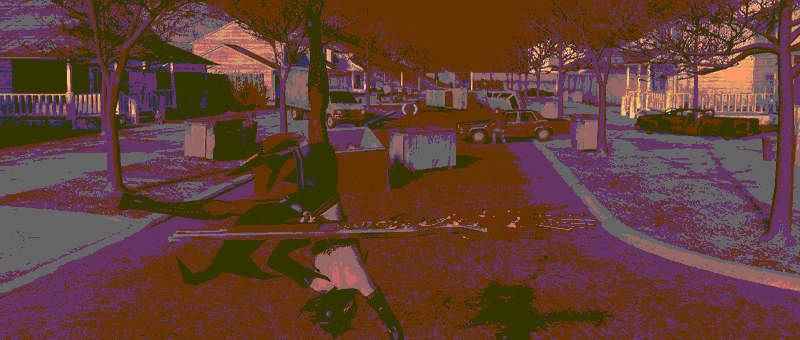
10. Bullet Witch (Cavia/Marvelous, 2006/2018).
Looking through the list of games I played and beat this year I knew pretty early on that Bullet Witch was probably going to make it to my top 10, though I couldn't really articulate why exactly at the time. Thinking about it now it largely comes down to the fact that they just do not make em like this anymore. The PC version starts with a utilitarian config tool with aliased letters and old-style windows buttons set to a really grungy background graphic with the game's also grungy logo, which made me think the port was made contemporaneously with the 2006 Xbox 360 release, but I just found out ~5 minutes ago that it was ported in 2018.
The PC port starting the way it does probably explains why I hear some people have issues running it, but I fortunately didn't have any, aside from having to tinker with it a little bit to figure out how to stream it over Discord.
Bullet Witch is probably one of those games where it was hard to see the value of it at the time. Sort-of confirming this feeling is the Reception section of Wikipedia's article for the game, which cites a small handful of really weird and bad western reviews of this game. The main non-racist takeaway is that it felt too much like a then-last-gen game and not enough like a then-next-gen game, which is interesting to contrast with the translated Famitsu articles on that same page that talk about how excited Cavia were to use next-gen features like destructible environments and large maps. I'm not going to bother unpacking it too much, but that kind of criticism sounds funny in retrospect, in a year where two companies released a new generation of consoles that (to me) feels entirely indistinguishable from the last.
Anyway, that particular historical positioning is probably at least a sizable amount of why I ended up enjoying Bullet Witch so much. There really are a bunch of giant open levels made entirely for the reason that it was cool to have maps this big at some point. The fact that the character mechanics aren't really built too strongly around that scale (there's a sniper rifle, but any kind of fast mobility is more speed tech than a sprint button) creates a texture that would probably be annoying on a longer game, but was ideal here. The game starts kind of in media res and ends in an open-ended sequel-hooky way, but since that never happened, the entire thing feels like you're incidentally getting to tag along with Alicia for 4-ish hours of her life. The game isn't really weighed down by too much exposition or explaining of setting lore beyond what is immediately important, so the entire experience has a nice lightness to it.
I think typing all of this out finally helped me zero in on why I enjoyed Bullet Witch as much as I did. It reminds me of other things like E.Y.E.: Divine Cybermancy or the planetary exploration parts of Mass Effect 1 without being tied down by having things outside of the scope of shooting guys in large maps (more of a problem with ME1 than with E.Y.E. in this comparison).
I suppose another "cusp PS2/360" aspect of this game is that it wasn't being made with the brave assumption of automatically being a flag-setting initial entry in the major Bullet Witch franchise, which has felt like an increasingly frequent marker of larger releases of the 2013-2020 console generation.
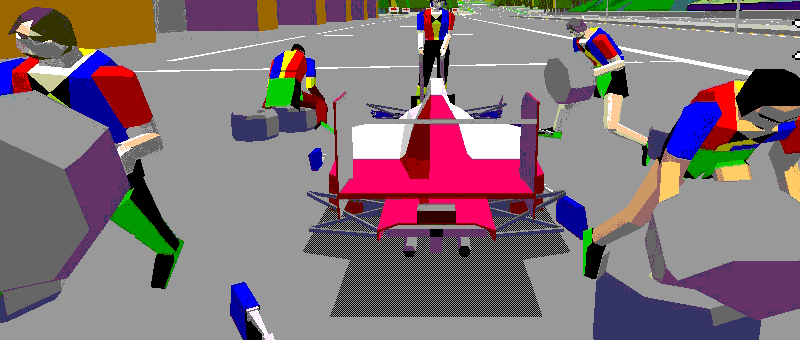
9. Virtua Racing (Sega/M2, 1992/2019).
I rekindled my enjoyment of driving games big time this year - so much so that there's two more of them coming right up after this one. I was initially contemplating putting just one in as a figurehead for the entire genre but I feel like all three have their own unique reasons for why I like them, so I've listed them all out separately.
Virtua Racing is probably one of the most beautiful-looking games on the Switch. M2 did a great job porting the arcade original over (there's a really interesting Digital Foundry comparison video breaking down the details if you're curious about that process). I really respect the confidence the people working on this had in the game's original graphics. There's no reworking of models or anything (in fact, they went through the effort of replicating some Model 1 graphical glitches), just an upscaling and an increase in draw distance. I really love the bright, colourful and sharp shapes of this game. And running at 60 FPS... Well, I'm usually not a framerate guy, but for racing games it really is very beneficial. Apparently getting the game to run at 60 was a lot of work (the arcade original was coded for 30), and I really appreciate it.
It helps that this game not only looks fantastic, but is also very fun to play. The car handles in a way that is satisfying and easy enough to grasp for the beginner stages at least, while the intermediate and advanced ones had me looking up strategy guides to figure out the particulars of this system. I was genuinely very surprised to find out that this game models things like drafting and tire wear (though that is only really an issue in the longer Grand Prix mode). The fact that I've managed to rack up several hours through ~6 minute races across the year makes me think that I could really dig deep into yet-uncovered levels of personal Virtua Racing mastery, if that position hadn't been firmly taken over by the next game in my list.
Shoutouts to Lockheed-Martin for co-developing the Model 1 with Sega and thus paving the way for some truly rockin 3D arcade classics.
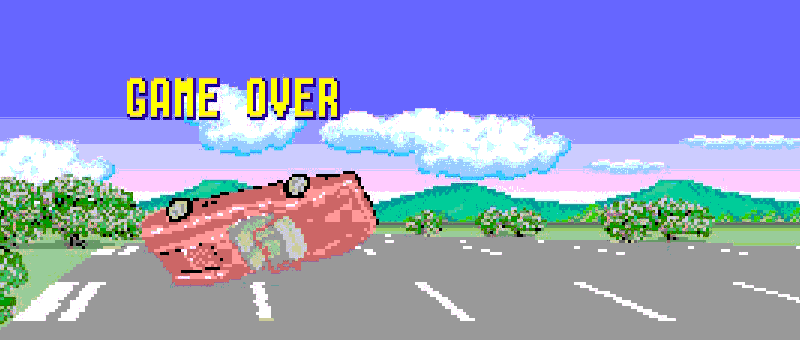
8. OutRun (Sega/M2, 1986/2019).
There was a good handful of weeks back in April where I'd start my day by booting up OutRun and going for 1-3 attempts at a clear. I didn't manage to get an ending by the time I stopped doing this, but just the process of gradually improving and seeing the proof in an ever-increasing high score (which eventually plateaued at around ~5 million, which is enough to get an achievement in Yakuza 0) was enjoyable enough by itself. I've returned to OutRun for a second time now, in December, where it turned into a surprisingly good way to spend an hour while dogsitting a sleepy puppy. It is in this environment that I finally managed to clear the game for the first time (Ending A on the 'Old' version), which is an event that only made me want to play the game more.
I don't really have anything too insightful to say about OutRun, honestly. I get the feeling like I might look back on it in a couple years as the game that finally made arcade games click for me, but for now, it's on this list simply by virtue of being a gorgeous game with fantastic music and a great vibe.
Congratulations to Yu Suzuki for winning the Terminal Estoc lifetime achievement award by getting two games in a row on the GOTY list.
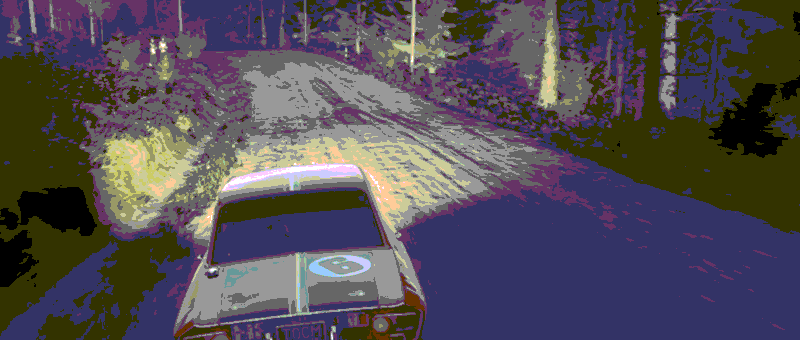
7. DiRT Rally 2.0 (Codemasters, 2019).
I've been growing a fondness for a certain era of rally cars since early last year (charting this by the middle section of my 2019 sketchbook, which is filled with blocky hatchbacks). Thanks to the landscape of ever-roving digital games sales, this was the year that I managed to add a new dimension to that initially aesthetics-driven fascination. Closing out the Terminal Estoc 2020 Racing Block is a DiRT Rally 2.0, a game that gave me a new hobby - rally racing.
Obviously, the first connecting point of interest is the roughly 100 real-life rally cars present in the game - fortunately my tastes lean towards the older, and thus weaker (and also easier and cheaper to repair) cars. Being a simulation-focused game, the car-embodiment and cockpit view veracity is really good. Playing this game without any on-screen HUD (a move actually recommended by most guides!) and relying entirely on your instrument panel feels great as a gameplay mechanic, and it creates a new angle of appreciation for some of these vehicles. There's a really fun moment of pulling a 2019 concept car out for a spin on the test track and seeing that the instrument panel basically already is a game HUD, with bright LCD displays for your current gear and RPM.
Of course, in rally racing, it's not just you and your car - there's also the co-pilot, who is my other favourite feature of DiRT Rally 2.0, and the one that pushed me into full-blown rally racing appreciation. When you start a rally, while you're at the starting line, your co-driver helpfully reads off the first half-dozen pace notes so you know what you're heading into. The first time I launched into a race and heard something to the effect of "four left long into six right over crest tightens three don't cut one hundred fifty" (said very quickly, also) I had to stop the game for an hour while I googled increasingly specific variations of "rally co-driver numbers meaning". This led me to watch a half-hour video on the concept of pace notes, which then led me to watching a bunch of real-life rally footage on youtube, and now half of my recommendations on that site are related to various motorsports.
I also have to shout out the really nice attention to detail on Codemasters' part in recording three different stress levels for all the co-driver calls. Hearing Mills say that "six right over crest" in a slightly more stressed tone than usual (and the subsequent fistpumping animation at the finish line) was honestly a much more rewarding indicator of improving performance than seeing my name climb the leaderboards in a particular rally event.
Not really GOTY-brief material, but I have a really vivid memory of the teacher's computer in an after-school art club I went to when I was 11 years old, and of the two games me and some friends found on it - Colin McRae Rally and Heroes of Might & Magic III. In a way, I feel like that computer ended up being as influential to me as the art classes themselves.
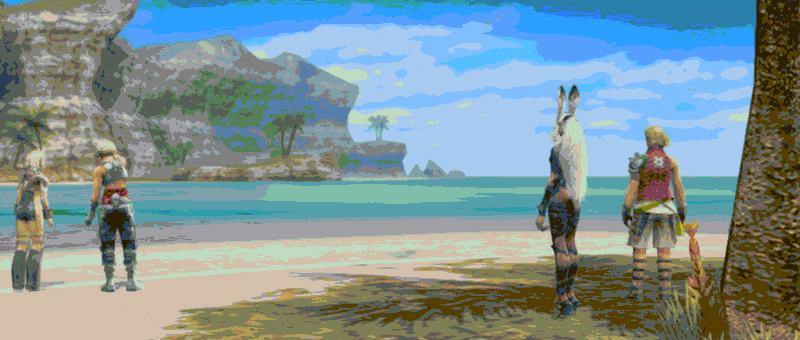
6. Final Fantasy XII: The Zodiac Age (Square Enix, 2019).
This year kind of ended up being very JRPG-heavy for me1, and FF12 stands here as an ambassador of sorts for that whole streak. I think it is probably the most mechanically interesting one out of the whole bunch. The License Board system lets you do some potentially fun non-linear character progression routes, even if those things only become apparent after your first playthrough, and even if it comes at the cost of a dauntingly steep initial decision-making curve.
There's a strange kind of inconsistent pacing to the game, though it's one I'm starting to understand better as a Final Fantasy signature. The intro to this game is a very dense, mood-setting and cutscene-laden couple of hours in a single city, but once you leave Rabanastre it starts to lose that intensity, and grows increasingly sparse leading up to the final stretch. The last third of the story especially felt like it was mostly up to me to full in the blanks in between disconnected plot beats. The writing that is there can be fantastic, though. Balthier is great, and characters like Basch or Marquis Ondore are there to deliver Alexander O. Smith-localised all-timers about nations or history or god or similar. I didn't mind the sparseness that much, and I understand it can be part of the genre territory depending on the design, I'm just left wondering about a FF12 that was written with this sparsity intentionally, rather than as a result of overscoping and having to cut content.
Despite my issues with some elements of this game, I still feel pretty good about having Final Fantasy XII: TZA up here on my list. I don't really know if I would have actually liked a hypothetically ideal version of this game that did manage to live up entirely to its potential. The gaps that exist in this game, as much as they are compromises, do end up being prompts for the player's investigation and imagination, and that is always a good thing. Certainly I enjoy reading other people's writing on FF12 more than I would if it was a completely untouchable classic. It also helps that the gameplay mechanics are perfect, especiall with quality of life changes in the Zodiac Age edition.
1: In order: this game, Chrono Trigger, Suikoden I&II, Xenoblade Chronicles 1, The World Ends With You and Final Fantasy IX.
I really do love Ivalice as a setting. I should try and give Vagrant Story and Final Fantasy Tactics a shot next year.
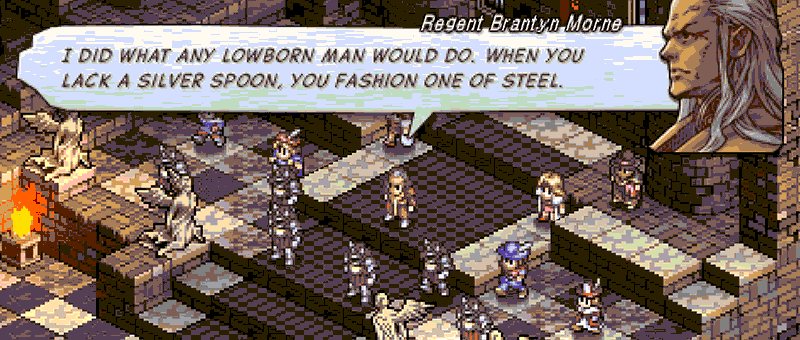
5. Tactics Ogre: Let Us Cling Together (Quest, 1995/Square Enix, 2010).
There is blood on my hands. How long till it lies on my heart?
Man, speaking of all-timer localisations by Alexander O. Smith. The PSP rerelease of Tactics Ogre: Let Us Cling Together (which I maintain is probably a top 3 video game title of all time) is a game that simply kept not missing on that front. I initially started this game because I had a hankering for turn-based strategy after playing Suikoden II with its simple-but-charming strategy battle segments. I got that in spades - I think my playtime ended up being something like 70 hours, and I barely touched anything outside of the main story mode - but the thing that really kept me coming back to it was the very, very strong writing. Evidently inspired by Yasumi Matsuno's outside perspective on the Yugoslav Wars, the plot of LUCT is a very severe (but not to the point of feeling gratuitously grim) stage for people from all sorts of social and material standing to deliver line after line of outstanding dialogue on war, the justifications thereof, and on the fates of people caught up in the gears of others' ambition. I once had a tamed octopus that said "Death is nothing, but to live defeated and inglorious is to die daily..." after falling in battle.
If there's one thing I have to hold against this game, it's that the PSP version really is structured like a PSP game, which is to say that it is long. After I beat the game once (again, 70 hours!), I unlocked the ability to move through the game's timeline freely, which gave me the option of re-making some pivotal choices in the story. Some of the differences between routes are drastically different, both in plot and in perspective given. There is also the Palace of the Dead, which is a 200-floor dungeon that you have to complete to see some of the more involved side-stories in the game. That's kind of a shame, because I do love the writing in this game, but I don't think I "300 hours playtime" love it, necessarily.
This game also features what I consider to be the longest late title card I've ever experienced ("Let Us Cling Together" is the title of Chapter IV). As I already loved the name of the game without knowing much of its story, I was very excited to see it.
Also, congratulations to Yasumi Matsuno and Alexander O. Smith for their Terminal Estoc lifetime achievement awards as well.
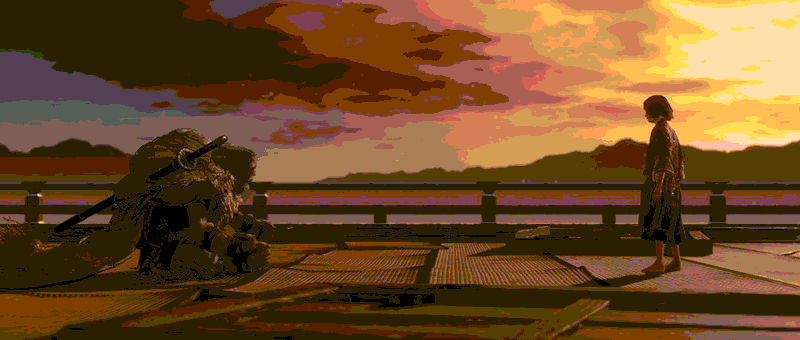
4. Sekiro (FromSoftware, 2019).
Even if I would love a different direction for FromSoftware as a whole, I feel like Sekiro is a very good entry in the broadly-defined "souls" category of their recent output. I understand this is a very strong point of contention and personal preference, but I think this is my favourite one to play myself. I feel like limiting the player to one weapon (gadgets aside) really strongly benefits the combat design. I wish they had gone even narrower with the character progression stuff - I don't mind prayer beads that much, but I kind of wish they hadn't done the gradual skill tree thing at all. Just give me all of it when I get the scroll! I don't need an arbitrary feeling of progress in this game as much as I need the Mikiri counter.
I really love the thematic design of the Wolf's combat style. In a way, it feels like it echoes a thing people sometimes say about older Souls games - that cheesing your way through fights is never a bad thing, since the games are unfair themselves. Most of the fights in Sekiro (at least the ones against humanoid enemies) could be read through this lens. It's a fun additional layer to how your opponents reveal themselves to you through their combat style - the wide variety of differently-proficient but straightforward soldiers, the handful of lone shadows that throw you off with various shinobi techniques, and the handful of guys that feel like they genuinely don't want to be there.
In that kind of framework, you get to be absolutely as scummy and underhanded as you want to be. I love it. You're the guy that all the Ashina soldiers later complain about being unfair and broken on the little internal NPC forum I imagine every video game has. I'm sure there are people who try to play the game as a straight-laced swordsman, and while the basic swordplay in the game is decent, I feel like that's a really lackluster way to play. The game really shines when you're overwhelming some lacquer-plated giant samurai dude by jumping around him like a monkey, throwing dirt and fireworks in his face as he tries and fails to get a bead on you. The various gadgets and consumables transform the basic "taking turns" mechanism of the swordplay into a matter of swindling as much "turn" as you can get. Getting a boss to acknowledge (sometimes verbally) that you're really pulling one over them, especially the ones that are shinobi themselves, feels really rewarding.
Sekiro is a game about being 5'11 in a world of 6'0s, and the shinobi prosthetic is your pair of platform sneakers.
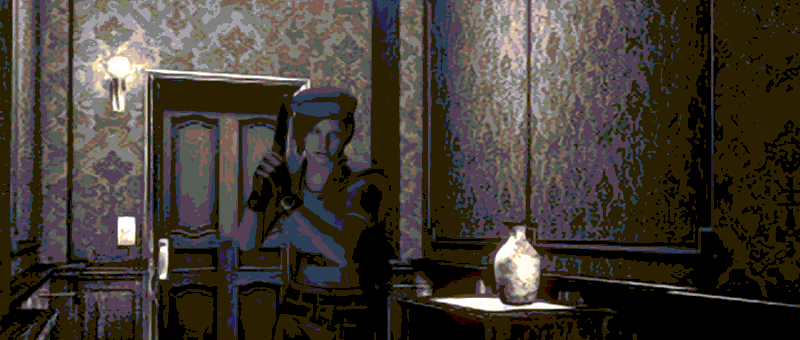
3. Resident Evil 1 Remake (Capcom, 2002).
What a gorgeous game. I was recommended to play this one as I was researching games with fixed camera perspectives for a long-term game project I've been working on, and man, what a masterful argument for fixed camera this is. The ability to direct the shot in every room feels like such a huge tool for building interest and suspense. I'm no genre historian, but I'm really interested in the fact that horror and adventure games seemingly stuck to the pre-rendered 3D background approach for a lot longer than other genres did in the 00s. It makes a lot of sense for these genres in particular, and I can't help but wish that hardware limitations were still such that they encouraged more of this kind of game.
The structure of the game is really tight too. I love the way the mansion opens up as you progress, and I love the fact that this is a 15 hour game you could shave down to like 3 if you wanted to. I keep thinking about this game every time I get my bi-monthly "what if I learned to speedrun something?" thought.
Also, playing this game for the first time in 2020 has got me thinking a lot about people who treat tank controls as an objectively outmoded way of controlling the player character. It makes perfect sense for a game like this! I tried the modernized direction system for a half-hour and found it to be more confusing and less fun than the 'old-school' method.
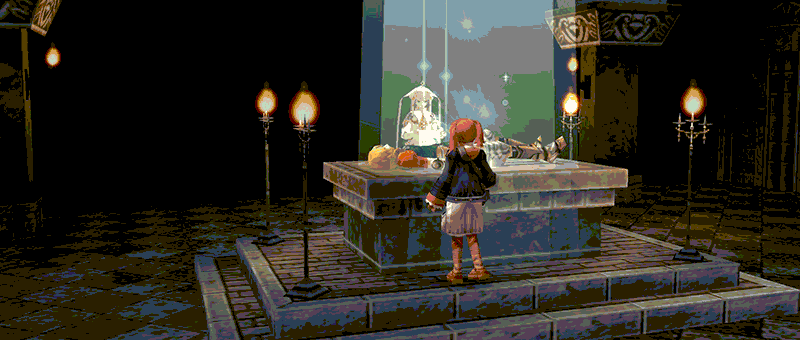
2. Xanadu Next (Nihon Falcom, 2005).
Man this game is beautiful. Steam tells me I have made 148 screenshots of Xanadu Next, which is roughly 10 screenshots/hour. The first time the game took one of its low-poly character models and showed it to me in a close-up, I spent the rest of the day with a sketchbook trying to figure out how to plug that style into my art process. I ended up making this piece, which was a pretty good stylistic landmark for my "more fanart in 2020" policy.
I really like the structure of the world in this game. It's not quite my favourite "one town and a dungeon" setup, but Harlech Island is close enough to it. Though the game has you head out in various directions and environments, you're never too far away from unlocking a shortcut back home. On the large scale, exploration feels like a sewing motion - pulling the thread out, then looping it back in. It's a very cozy way to experience a game world.
It doesn't take too long to figure out what the game is going to be - exploring dungeons and ruins, fighting goblins and skeletons, getting some kind of shoe that lets you walk on lava or somesuch. It is all very archetypal in a good way. Familiar mechanics and Falcom's use of western fantasy motifs create a game which feels like a vaguely-recollected second playthrough even on your first time with it, which suits the narrative of the game (and also its position as a release to celebrate the 20th anniversary of the original Xanadu) really well.
Looking through my screenshots to find a good image for the header and remembering everything about this game I'm kind of itching to start up a new playthrough soon. Much like Resident Evil 1, Xanadu Next scores you at the end of the game based on item collection, saves made and time taken, and it's also on my short list of games I'd like to speedrun.
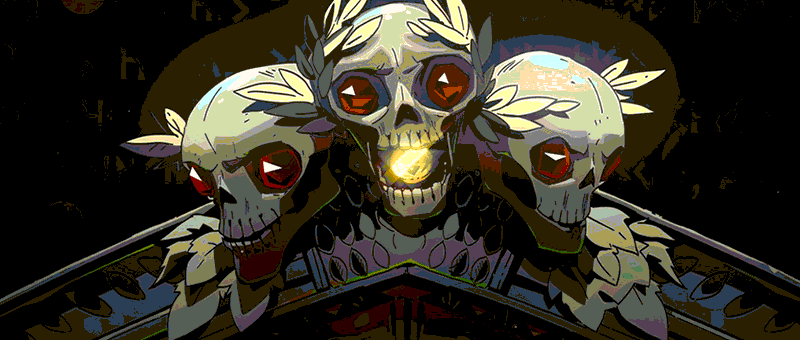
1. Hades (Supergiant Games, 2020).
I was thinking about this one for a little bit and wondering whether I should maybe be more coy or selective or whatever and pick something else but then I realised I'm past pretending I have some sort of nuanced refined palate, and also it's not like this is a website with huge clout where I could cause a ripple the industry by saying my Game of the Year is Baroque for the Sega Saturn, thereby making them localise the (currently JP-only) upcoming Switch port. And so, I am proud to say that the #1 Winner of the First Annual Terminal Estoc "Why Not?" Game of the Year Awards is Hades!
Gaming-wise, 2020 has been the year of many things. 2020 is the year of racing games. It's the year of roguelikes. It's the year of arcade games. It's the year of 80 hour JRPGs and tactics games. And while that last one doesn't really fit here, Hades has otherwise managed to roughly position itself right in the middle of all the other genre and mechanical foci I've cycled through this year. An excellent short-term and long-term structure, as well as highly customizable difficulty options, turned this into a real teeth-sinker for me.
Like all the other games in my top 3, Hades gives you a pretty detailed rundown of how well you did at the end of a run, which I'm starting to realise is a pretty good feature. If I wasn't enjoying the basic mechanics much I probably wouldn't have gotten hooked on the personal leaderboard aspect of the game, but as it stands I ended up sinking just shy of 120 hours into this game, most of it spent pushing myself to play better, to figure out more efficient ability combos and more effective ways of moving through encounters. I understand Hades isn't the only game with a potential for theorycrafting and honing one's skills (and honestly, the former isn't even an attraction point for me by itself - if a game has too much build complexity going on I'll just get overwhelmed and look up guides on the internet), but this game delivered it alongside such a thoroughly good package that I really appreciated it being there to keep me actively engaged while I spent my time digesting it all.
I said Hades doesn't fit my 80 hour JRPG focus this year but in a way my rabbit-hole into it helped me better understand the reason why those games usually have some obscene level 99 superboss way past the end of the game. It's easy to get attached to these game worlds, and it can be nice to have some kind of mechanical reason for you to stick around for longer than you need to.
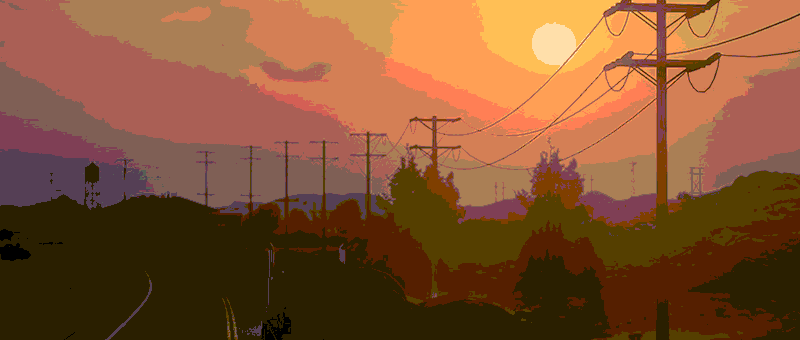
And there you have it - the 2020 "Why Not?"s are officially over. Thank you for sticking through with me up to here. The circumstances of the year have turned me back into a little gaming hermit, and it's been nice to have this blog as an outlet to make that feel like not an entirely insular brain-smoothing experience, but instead as a prompt for further creative activity. I hope it's been an enjoyable read. I'll see you next year, gamers!
~titas
I used to think it's a really outdated mechanic, but I'm starting to think that 2021 might be the year of the high score.












